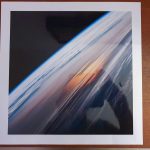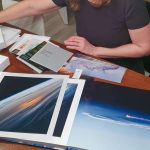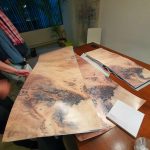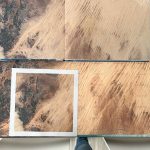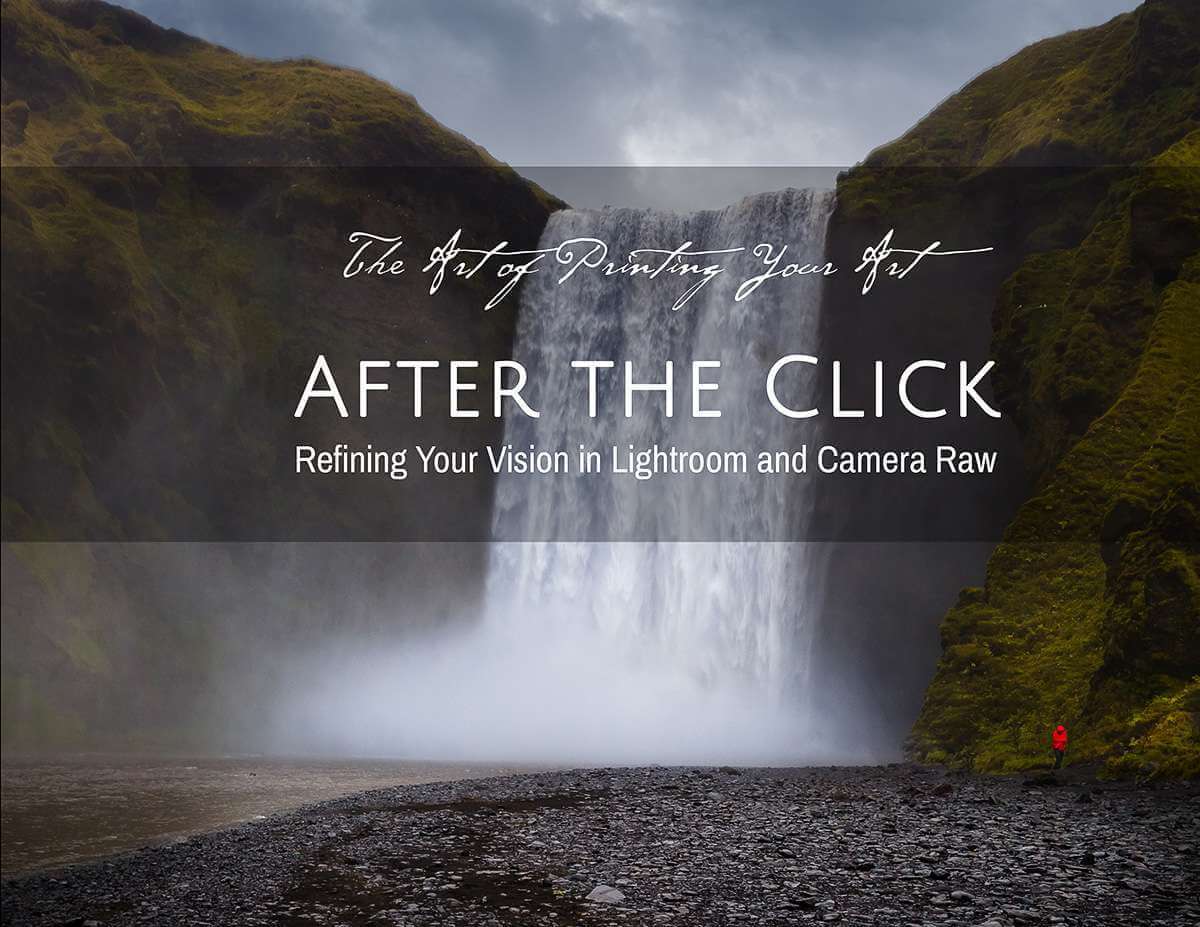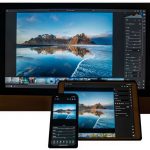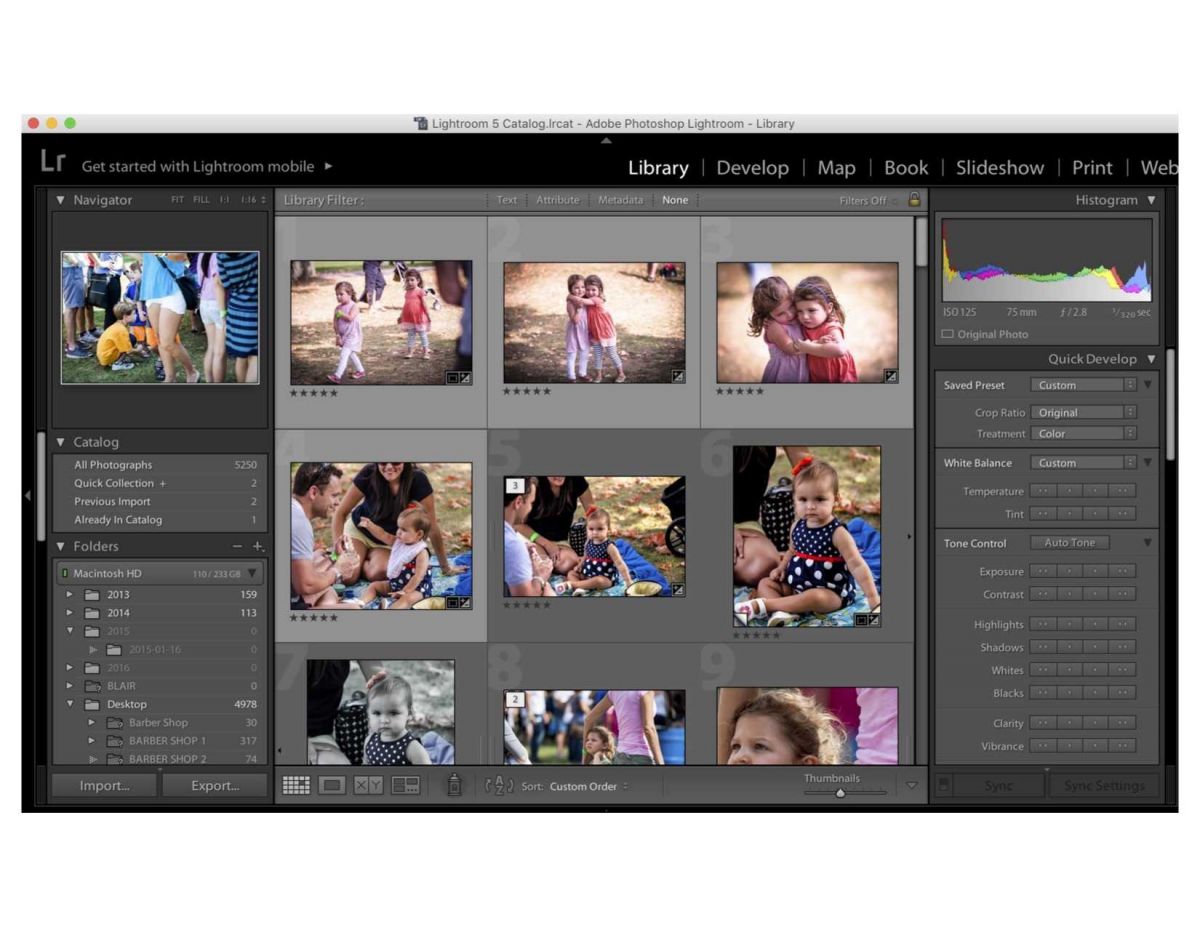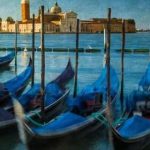This post is the first of a three-part series to help you re-ignite your creativity.
Subscribe to the BPSOP newsletter to be notified when the next post is published.
As background to the following, I’ve been working on my latest book since 2015. It’s gone through several iterations, not to mention ups and downs. The project was my way of getting through an intense period of grief. Since that time I’ve experienced more loss, but like a siren song, this book keeps calling to me to come back and play. I’ve gone through a range of emotions — from excitement to frustration — and have taken months’ long breaks. Yet every time I walk away, I keep coming back to this project because it gives me something I need but cannot find the words to explain.
Getting to the proof-of-concept book (shown) and fine art prints has been a major labor of love. In my heart I know that, as long as I keep taking steps, eventually I will have the finished XL book in hand.
The Creative Flow: Why Your Best Work Happens When You’re Already Working
When we think of creativity, we often picture those “eureka” moments—times when an idea strikes out of nowhere, and we’re struck with a surge of inspiration. It’s easy to imagine that the best work comes from these spontaneous flashes of brilliance, but more often than not, our best work happens while we are already deep into a project. Speaking for myself, some of my best work came while deep in grief after the loss of a loved one. Allowing myself to be in what I call “The Void” led to images others called open, uplifting, and expansive. All I had to do was open myself up to it.
In my experience, the most profound and powerful creativity emerges when we’re not searching for it at all.
The Myth of the Creative Genius
Many of us have been conditioned to believe that creativity is a mysterious force that visits only the chosen few, or that it comes in bursts of inspiration. The trope of the “creative genius” with a sudden moment of clarity reinforces this idea. In my experience this myth couldn’t be further from the truth. Although inspiration can appear out of the blue, more often than not it comes when we’re already in motion—when we’re engaged in the act of creating.
The Power of Momentum
The idea that creativity flows most effectively when we’re already working ties directly into the concept of momentum. The initial stages of a project can feel slow, even frustrating. We might sit down with a blank canvas, page, or project and struggle to come up with something worthy. When you feel this, don’t stop. Keep going and plod through this phase — but without expectations. The point is to keep moving, not to reach a particular goal. Why? Once we start putting in the effort—whether it’s photographing, drawing, writing, or any other form of creation—we begin to build momentum. And, crucially, this momentum propels us forward, unlocking new ideas and connections. This, my friends, is where the magic happens. As you continue working, new thoughts, solutions, and insights begin to emerge. It’s like creating a swirling vortex of creativity around you — you have to be spinning to get it started.
The process of engaging with the material, confronting challenges, and making decisions pushes the work forward in ways that passive thinking never could. Often, the best ideas don’t appear during brainstorming sessions—they come when you’re elbow-deep in the process, wrestling with the work itself. Insights often come while doing something banal, like washing dishes, walking the dog, or taking out the trash.
The Concept of Creative Flow
This leads us to the idea of “flow,” a term popularized by psychologist Mihaly Csikszentmihalyi. Flow refers to that state of deep immersion and concentration where the activity itself becomes its own reward. Time seems to disappear, and the work feels effortless, even if it’s not. When you’re in a state of flow, you’re no longer struggling to come up with ideas—your mind is fully engaged in the task, and creativity flows naturally from your active participation in the process.
The irony is that the more you try to force creativity into existence, the more elusive it becomes. I know from experience that it’s possible to burn out by trying to force creativity, and the antidote is to let go of the need to create something worthy and just create for the sake of it, without judging the results. Many of us have to create a lot of what we call garbage before the good stuff comes out. It’s a process, and it’s only by working through the struggle—by continuing to put in the time and effort—that creativity can surface. The more you embrace the process, rather than waiting for inspiration to strike, the more likely you are to experience these moments of flow.
The Importance of Consistency
In many ways, the key to this kind of productive, creative momentum is consistency. You don’t need to wait for the perfect moment or for a burst of inspiration. By committing to working regularly, even when you don’t feel inspired, you give yourself the opportunity to find creativity through persistence. The act of showing up, day after day, is itself a kind of art form. It’s not about waiting for the perfect moment, but about trusting that, even on days when you feel stuck, something will unfold. The trick is to not judge what you create as good or bad. The discipline of working through the low points, rather than waiting for motivation to appear, can lead to breakthroughs when you least expect it.
Trusting the Process
It’s easy to become discouraged when things don’t come together immediately, but creativity is a process. Often, you need to move through stages of frustration, doubt, and imperfection before arriving at a breakthrough. This is why so many artists recommend simply sticking with it. The key is to trust the process and trust that, by continuing to work, new connections and ideas will emerge. And just know that even the most successful create garbage work that will not see the light of day.
So just remember that the most powerful creative moments often happen in the thick of the work itself, not in the quiet, contemplative space before the work begins.
How to Harness This Flow in Your Own Work
So, how can you tap into this creative momentum for yourself? Here are a few tips:
1. Start, Even When You Don’t Feel Like It: One of the best ways to trigger the creative process is simply to begin. Don’t worry about whether the work is “perfect” or not. The act of starting is often the hardest part.
2. Embrace Imperfection: Perfectionism and harsh judgement can be a major barrier to creativity. Allow yourself to create bad photos. It’s all part of the process, and it’s okay.
3. Create Regularly: Consistency is key to building momentum. Whether it’s daily, weekly, or on some other regular schedule, the more often you engage in the act of creating, the more likely you are to experience flow.
4. Stay Open to Unexpected Ideas: When you’re immersed in a project, you might find that unexpected solutions or new directions arise. Stay flexible and allow your work to evolve naturally.
5. Push Through the Blocks: When you hit a creative block, don’t stop. Take a break if you need to, but come back to the work with fresh eyes. Creativity is often just on the other side of frustration.
Conclusion
The best creative work isn’t necessarily born out of a moment of inspiration; it’s the result of continuous, committed effort. Whether you’re writing, painting, composing, or working on any other artistic endeavor, the real breakthroughs often come when you’re already knee-deep in the process, pushing through the challenges and trusting that new ideas will emerge. The trick is to keep working, even when things feel slow or uninspired. Creativity doesn’t always come to you—it’s something you build, bit by bit, through persistent action. So, next time you find yourself staring at a blank page or canvas, remember: just start. The best ideas are waiting for you in the middle of the work itself.
Become the best photographer you can be
 Whether you are new to photography or have been shooting for years, you won’t want to miss taking a class with Brit Hammer.
Whether you are new to photography or have been shooting for years, you won’t want to miss taking a class with Brit Hammer.
Brit has been mentoring photographers and artists for over 20 years. She is an experienced creativity coach and will work with you where you’re at AND help you reach your own personal next level.
Most importantly, Brit’s students love her gentle image reviews that are always full of positive energy!
Brit’s classes are offered just A FEW TIMES PER YEAR.
Secure your spot now!
Finding Beauty
Beautiful Black & White
“There are great photographers and great teachers, but it is rare to find a great photographer who’s also a wonderful instructor; Brit embodies that rare combination.”
MORE FROM BRIT
Private mentoring
Photography tutorials
Fine Art Prints – The TERRA Collection
WHAT BRYAN PETERSON SAYS ABOUT BRIT HAMMER
“I rarely speak out with this level of enthusiasm for any of our instructors because ALL of our instructors are equally great in teaching their individual craft, so why have I chosen to call attention to one of our instructors, Brit Hammer? Simply because of Brit’s ability to transform each of her students’ vision from good to great consistently, time and time again; in part because of her insightful lessons, but I can say unequivocally that Brit’s greatest strength is her in-depth and disarming critique style of each student’s weekly assignments. It is the most often comment I receive from BPSOP students: ‘Brit’s critiques were the greatest value in this course. The assignments were great, BUT the critiques were by far the most valuable!’ In closing, if you have yet to take a class from Brit, consider filling the ‘void’ with the best opportunity to grow your photography in ways you have perhaps never imagined!“ — Bryan F. Peterson

